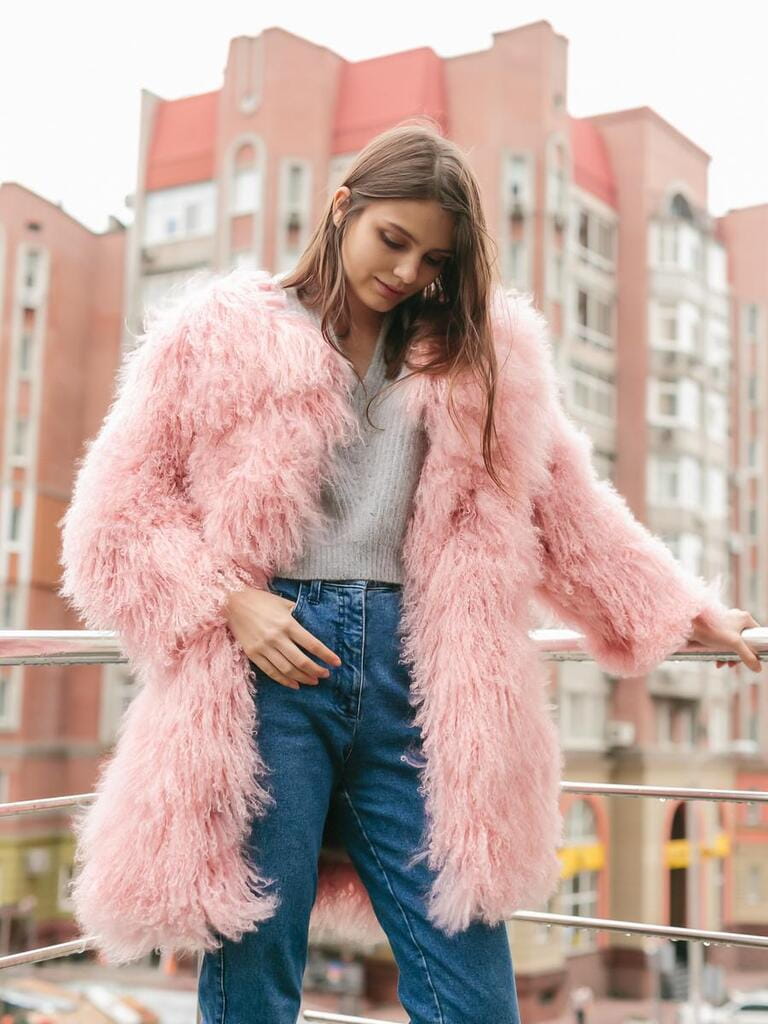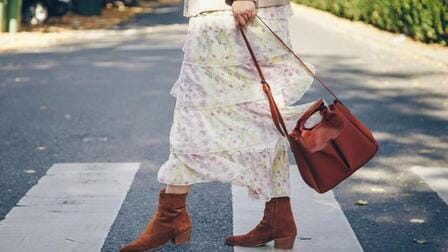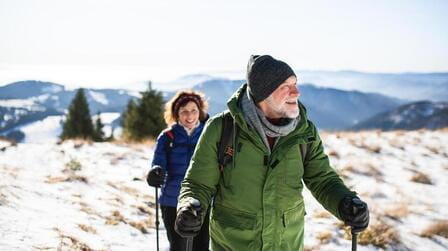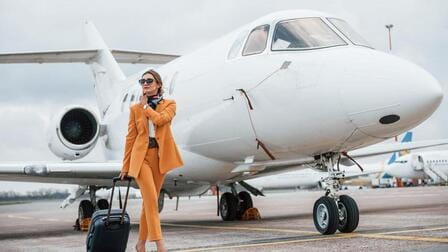When travelling to a cold country by plane, knowing what to wear can ensure you stay comfortable during your travels. The right clothing choices will keep you warm on the plane and prepared for the colder weather when you arrive. This article will explain in detail what to wear on a plane when travelling to a cold country.
Dress in Layers
The most important tip for what to wear on a plane when travelling to a cold country is to dress in layers. Wearing several thin layers allows you to adjust your warmth and cooling during the flight. The cabin temperature and personal temperature preferences can vary drastically when travelling. Having layers gives you flexibility.
Start with form-fitting thermal underwear. Thermal underwear helps regulate body temperature and wick moisture away from the skin. Both long underwear tops and bottoms work well as a base layer.
Next, wear insulating middle layers like a long-sleeve shirt, sweater, or sweatshirt. Fleece and wool fabrics provide warmth without bulk. A zippered cardigan or pullover allows you to modify your temperature quickly.
Your outermost layer should be a comfortable, roomy top. An oversized sweater or button-down shirt works well. You want enough space to fit your base and middle layers comfortably underneath.
Leggings, jeans, or travel pants like joggers make excellent bottom layers for flights. They stretch to fit your base layers and retain warmth.
With the right layered clothing, you can add or remove pieces as needed for your comfort level on the plane. Having a coat, hat, and scarf on hand provides additional warmth once you arrive in the cold climate.
Choose the Right Fabrics
Pay attention to the type of fabrics you choose for travel layers. Certain fabrics hold up better for air travel and cold conditions.
- Wool - Wool naturally resists odors, insulates when wet, and maintains warmth. Look for Merino wool clothing.
- Fleece - Lightweight fleece layers well and dries quickly.
- Thermal/Microfleece - Thermal underwear keeps you dry and regulates body temperature.
- Cashmere - Cashmere provides ultra-soft warmth and packs well for travel.
- Silk - Silk base layers don't absorb odors and retain warmth.
Avoid bulky fabrics like cotton that take up space and lack insulation. Synthetic performance fabrics like polyester and nylon work well as moisture-wicking base layers. Blends that incorporate wool, cashmere, silk perform ideal for what to wear on a plane when travelling to a cold country.
Focus on Warmth
When packing clothing for a flight to a cold climate, focus on warmth over style. Layers should insulate you and trap heat close to your body. You can add fashionable accessories at your destination.
Look for long sleeves, pants, high necklines, and closed-toe shoes. Thick socks add warmth to your feet. Don't forget gloves or mittens and a hat that covers your ears.
A hooded sweater or jacket provides head warmth. A buff can act as a neck warmer, face mask, hat, and headband. Hand warmers and foot warmers also come in handy during cold weather travels.
While bulky coats may seem logical, lighter layers allow more comfort and temperature control on the plane. Save your winter parka for after you land.
If possible, avoid metal on clothing. Metal zippers, snaps, and hooks conduct cold. Look for clothes with fabric closures like snaps and elasticized waistbands.
Prioritizing insulation means you stay warmer on the plane and adjust easily to the cold weather upon arrival.
Choose Comfortable, Stretchy Fabrics
For travel wear, clothing that stretches allows for ease of movement. Think soft, flexible fabrics with a bit of spandex or elastane added.
Stretchy thermals, leggings, and sweatpants accommodate your layers well. Yoga pants work as both base layers and comfortable travel attire.
Jeans with a bit of stretch feel less restrictive when sitting for long periods. Guys may opt for stretch jeans or joggers over more rigid denim.
Knits like soft cotton-cashmere blends have natural flex. Look for details like ribbed cuffs and waists that hold layers in place while allowing a full range of motion.
Unrestrictive layers can mean the difference between comfort and misery during a long haul flight. Stretchy, flexible fabrics move with you whether sleeping or walking around the cabin.
Bring Socks and Accessories
Don't underestimate the value of warm socks and cold weather gear like gloves, hats, scarves, and masks.
Pack thick wool hiking or ski socks. Thermal socks add cushioning and wick away moisture. Wear your warmest, coziest socks on the plane to keep your feet toasty. Having spares allows you to change into a fresh pair before landing.
Mittens keep hands warmer than gloves by allowing fingers to share warmth. Look for mittens with fold-back tops to free fingers as needed. Neck gaiters or balaclavas protect exposed areas like your nose and face.
A fleece-lined winter hat pulls over your ears. Soft scarves can wrap around necks and faces for extra insulation.
Small accessories like earmuffs, face masks, hand and foot warmers take up little luggage space but make a big impact when battling cold climates.
Consider a Travel Outfit
Rather than wearing your bulkiest clothes on the plane, aim for versatile travel outfits. Start with base and middle layers ideal for flights. Then add coordinating third pieces that work for both in-transit and after landing.
For women, leggings, a thermal tee or tank, and an oversized cardigan makes a comfortable travel outfit. Swap the cardigan for a winter coat when you arrive. A dress with leggings, sweater, and tall boots serves as stylish cold weather gear.
Men can wear sweatpants or joggers with a henley shirt, zip hoodie, and sneakers or boots for the flight. Add a winter parka, gloves, and a hat once landed. A sweatshirt layered under a vest or sport coat dresses up comfortably.
The right accessories like scarves, gloves, and winter footwear convert in-flight basics into cold weather ensembles. With some careful layering, you avoid outfit changes upon arrival.
Be Airport Security Conscious
When dressing for plane travel in cold climates, keep airport security rules in mind. Layers should be easy to remove at security checkpoints when requested.
Avoid bulky clothing and metal closures that may flag you for additional screening. Do not wear jackets and coats through the security line - carry them in your hand instead.
Footwear should slip off easily for passage through detectors. Scarves and hats may need to be removed.
Dress and pack so you can quickly remove outerwear and accessories if requested by security personnel. Easy on, easy off layers help you move smoothly through checkpoints.
Review Luggage Weight
Carefully consider the weight of your packed layers when travelling to cold regions by air. Most airlines strictly enforce baggage weight limits and charge hefty fees for overweight bags.
Heavy winter boots, bulky sweaters, and coats quickly increase luggage weight if you pack unwisely. Save weight by wearing your heaviest clothes and shoes. Bundle up when boarding so you can pack as light as possible.
Choose lightweight merino wool and fleece over thick cotton and knits. Limit yourself to one coat, one pair of snow boots, and handful of warmer accessories.
Review luggage allowances to avoid excess baggage fees. Weigh bags at home to ensure you stay within the limits.
With careful planning, you can stay warm on a flight and properly dressed upon arrival while avoiding extra baggage costs.
FAQs About What to Wear on a Plane to Cold Places
What is the best way to layer clothes for a flight to a cold climate?
Start with moisture-wicking thermal underwear and leggings/tights as a base layer. Add insulating mid layers like merino wool sweaters. Top with a roomy, breathable shirt or jacket. Have accessories like a hat, scarf, and mittens accessible.
What fabrics work best for cold weather flights?
Choose natural fabrics like wool, cashmere, and silk that insulate even when wet. Synthetic performance fabrics with wicking properties also regulate temperature well. Avoid cotton which lacks warmth and takes extensive space.
How many layers should you wear on the plane?
Aim for 2-3 breathable layers on top and bottom. Enough to feel comfortably warm, but not so much that you overheat on the plane. Having pieces you can easily take off helps regulate body temperature.
Should you wear your warmest winter coat on the flight?
No - heavy coats take up needed space when seated on planes. Opt for flexible layers you can add and remove. Carry your winter jacket with you instead of wearing it while flying. Use a hoodie, cardigan, or lighter jacket onboard.
What footwear is best for flights to cold places?
Wear shoes that easily slip off for airport security like slip-on sneakers, loafers, or boots. Save heavy snow boots for your arrival destination. Pack extra pairs of warm wool socks that you can change into.
Conclusion
Dressing properly for flights to cold climates requires balancing comfort, warmth, and practicality. Carefully layered insulating fabrics under stretchy outer pieces allow you to respond to different temperatures during travel. Accessories like scarves, gloves, and hats add light warmth without bulk. Choosing the right materials and a versatile travel outfit means you arrive ready to explore your chilly destination in comfort.












